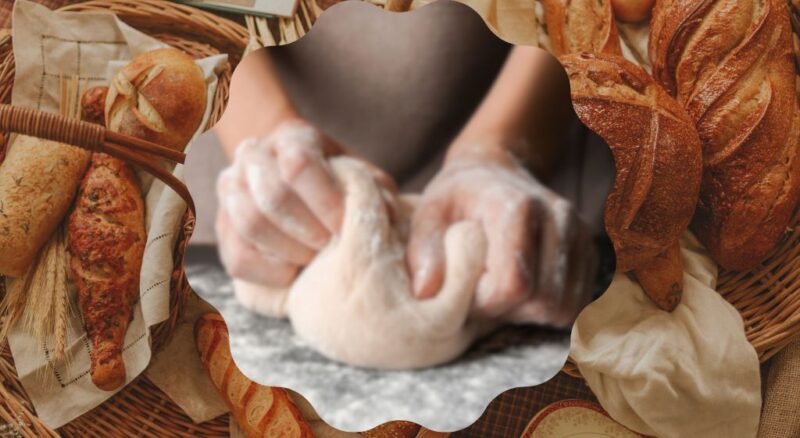There is nothing more fulfilling than entering your house and being welcomed by the smell of a freshly baked loaf of bread! Don’t you love that whole ambiance? Making a perfect loaf is a beautiful blend of science and art, it combines simple ingredients to create something that’s nourishing, satisfying, and delicious.
Today we will list five key ingredients necessary to bake that perfect loaf. We’ll learn why these elements are important, their functions, and how they work together to produce a variety of bread types.
1. Flour
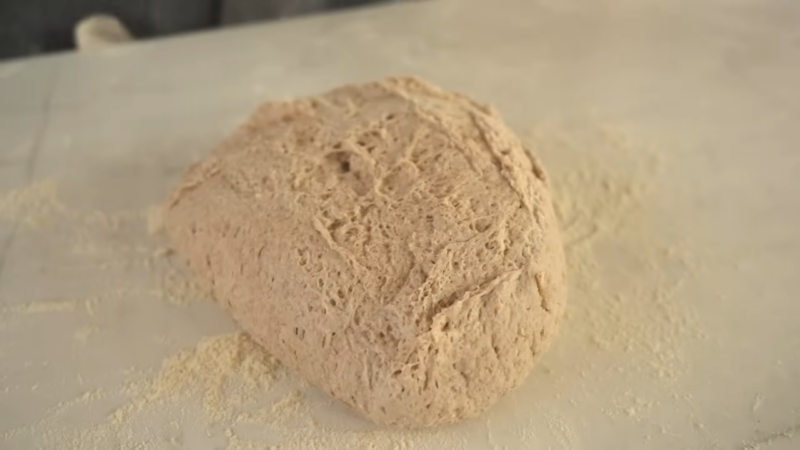
Flour, the mainstay of any bread recipe, is the backbone of its baking. It’s what gives bread its substance, its structure, and predominantly influences its flavor.
Why is flour important?
Flour, as the base ingredient in bread, has a significant role in determining the texture, crust, volume, and even flavor. The flour you choose, which is essentially milled grains, contains proteins that form gluten when mixed with water.
Gluten acts like an elastic network, making the dough stretchable and capable of trapping gas produced during fermentation, resulting in the dough’s rise. Additionally, the starch in flour absorbs water and swells up during the baking process, giving the bread its crumb structure.
Different types of flour, such as rye or whole wheat, can bring out distinctive flavors and textures in your loaf, further diversifying your baking repertoire.
Selecting the Right Flour
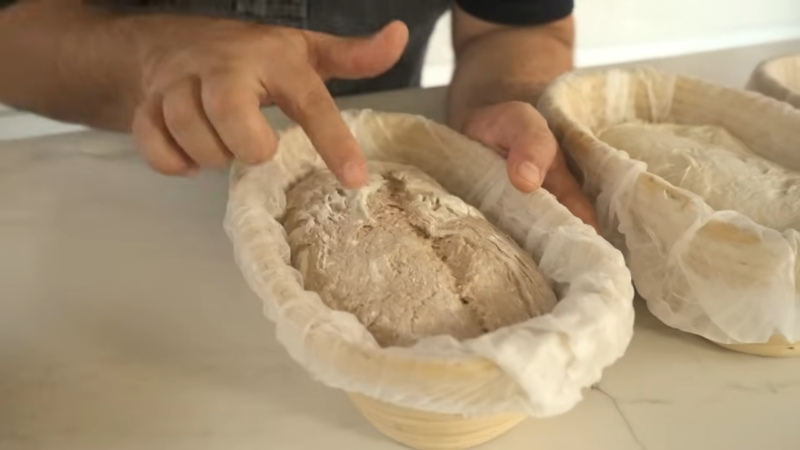
The choice of flour directly influences the quality of your bread. Bread flour, for example, is milled from hard wheat and boasts a high protein content—around 12-14%. This makes it ideal for yielding bread with a sturdy gluten structure and a high rise.
Conversely, all-purpose flour offers a protein content of around 10-12%, making it a versatile option that strikes a balance between structure and tenderness, suitable for a wide variety of recipes. Whole grain flours, such as whole wheat or rye, contain less gluten-forming proteins, which gives your loaf a robust flavor and dense texture.
For a more balanced result, they can be combined with bread flour or all-purpose flour, offering the best of both worlds – the hearty flavor of whole grains and the light, airy texture of bread flour.
| Flour Type | Protein Content (%) | Characteristics | Recommended Use |
|---|---|---|---|
| Bread Flour | 12-14 | High protein content, sturdy gluten structure, high rise | Ideal for making bread with a strong, airy texture |
| All-Purpose Flour | 10-12 | Versatile option, balanced structure and tenderness | Suitable for a wide variety of bread recipes |
| Whole Grain Flour | Varies | Less gluten-forming proteins, robust flavor, dense texture | Great for hearty, flavorful breads |
2. Water
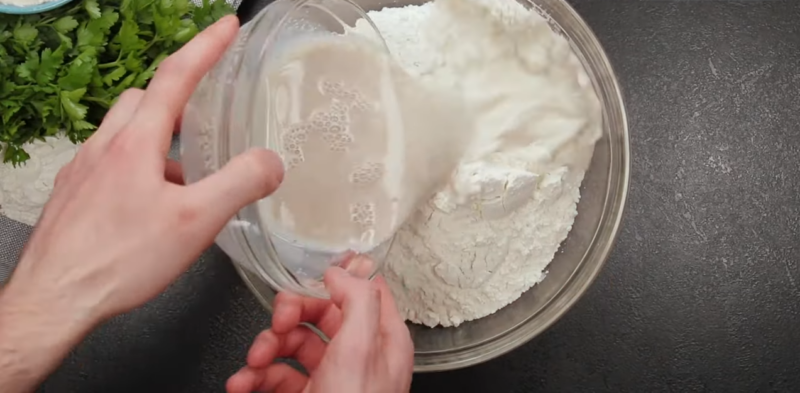
Water, despite being a common ingredient, is critical to the chemistry of baking, contributing in several ways to the bread-making process. Water plays a more complex role than simply bringing the dry ingredients together to form a dough.
When water interacts with flour, it hydrates the proteins and starch, instigating the formation of gluten and the process of starch gelatinization, which is the basis for forming a workable dough that will eventually yield bread with good structure and texture.
Water also acts as a solvent for yeast, salt, and other soluble ingredients, ensuring their even distribution throughout the dough. Moreover, it aids in several enzymatic reactions during fermentation, and its conversion to steam during baking contributes to the oven spring and aids in forming a well-browned crust.
The Importance of Water Temperature
The temperature of the water used in bread-making has a significant impact on the dough’s fermentation rate. Warm water, typically around 100-110°F, is used to activate the yeast, which speeds up the fermentation process. However, water that is too hot (above 140°F) can potentially kill the yeast, halting fermentation altogether.
Temperature control in baking is an art in itself. Bakers can control the rate of fermentation to suit their schedule or to achieve certain desired flavor profiles by manipulating the dough temperature. For example, slow fermentation at cooler temperatures often leads to loaf with a more complex flavor profile.
3. Yeast
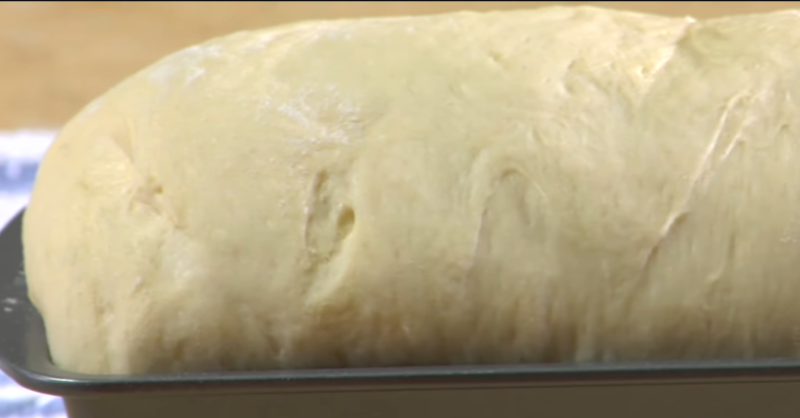
Yeast, a tiny single-celled organism, is the magic ingredient that transforms a dense lump of dough into a risen, airy loaf. This type of fungus is responsible for leavening. When yeast is mixed into the dough, it feeds on the sugars present and releases carbon dioxide gas and alcohol in a process known as fermentation.
The carbon dioxide gas gets trapped within the gluten network, causing the dough to inflate and eventually giving the bread its characteristic porous texture. The alcohol produced during fermentation, along with a multitude of other by-products, significantly contributes to the distinctive flavor and aroma.
There are various types of yeast used in baking, such as fresh yeast, active dry yeast, and instant yeast, each of which has its unique properties and requirements for activation.
Properly Using Yeast
Using yeast effectively can be the difference between a well-risen loaf and a flat, dense one. It’s important to ensure that the yeast used is fresh and properly activated, especially if you’re using active dry yeast. Yeast is usually proofed, or activated, by combining it with warm water and a pinch of sugar.
This process ensures that the yeast is alive and ready to work its magic on your dough. The quantity of yeast used also impacts the rising time and flavor of the bread. Using more yeast leads to a faster rise, but can sometimes result in a less desirable yeasty flavor, while using less yeast usually requires a longer rise time and often results in a more complex flavor.
4. Salt
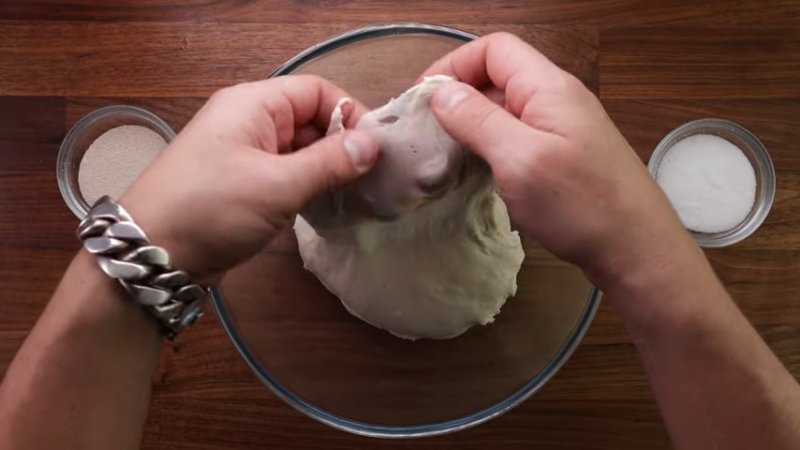
While not contributing to the structure of the dough, salt is critical for enhancing flavor and controlling the yeast’s fermentation activity.
Why is Salt Important?
Salt enhances the overall flavor of the bread and improves the gluten structure, making the dough stronger and less sticky. Moreover, it plays a pivotal role in controlling yeast activity by slowing down fermentation.
This prevents the dough from rising too rapidly, allowing for a steady and controlled rise. This, in turn, leads to an improved texture and flavor in the final product. Without salt, it would taste bland and exhibit a coarse texture.
It also wouldn’t develop the beautiful golden-brown crust that makes the loaf visually appealing and adds a delightful crunch to every bite.
How to Properly Use Salt?
It’s crucial to use the correct quantity of salt in baking. Too little, and the bread may taste bland and have a weak structure; too much, and it can excessively slow down yeast activity, leading to a dense loaf.
As a general rule, about 2% of the flour weight, approximately 10g (or 2 teaspoons) for every 500g of flour, is a good amount of salt for most recipes. The distribution of salt in the dough should be uniform. It’s often dissolved in the water used for making the dough or thoroughly mixed with the flour before adding water.
It’s crucial not to place salt directly onto yeast, as salt can dehydrate and kill yeast cells, impeding the leavening process.
5. Fat
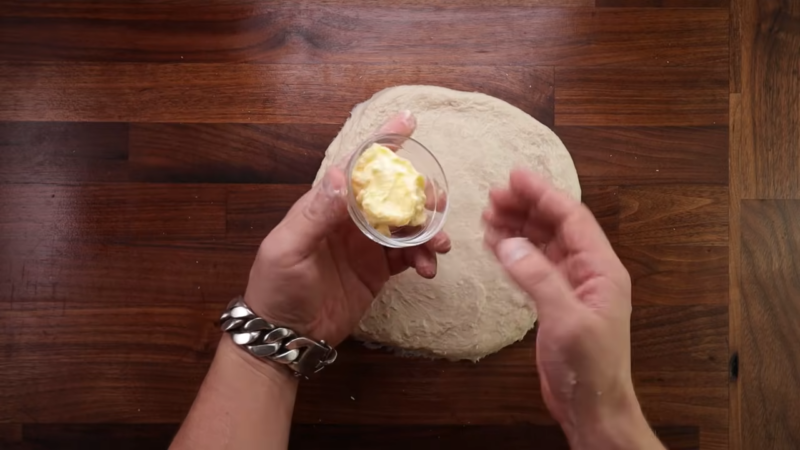
Fat, while not always used, can enhance the texture and flavor of the bread, and can be a key factor in certain types of bread. Fats such as oil, butter, or eggs in these recipes make the loaf softer, more tender, and longer-lasting.
They coat the flour proteins, reducing their ability to form gluten, and therefore making the bread’s crumb more tender and less chewy. Fats also add flavor, enriching the overall taste. Furthermore, fats help to keep the bread fresh for longer by slowing down the staling process. This is particularly useful when baking a loaf that needs to last for several days.
Choosing and Using Fat
The type of fat used in baking can significantly influence the final result. Olive oil, for example, gives a distinct flavor and soft texture, making it an excellent choice for Mediterranean bread like focaccia. Butter adds a creamy flavor and a tender texture, ideal for brioche or dinner rolls.
Regardless of the type, the amount of fat should be controlled as too much can result in a heavy, greasy loaf. A good rule of thumb for most recipes is to use around 1 to 3 tablespoons of fat per loaf, depending on the desired result.
Do you need a Perfect Homemade Bread Recipe?
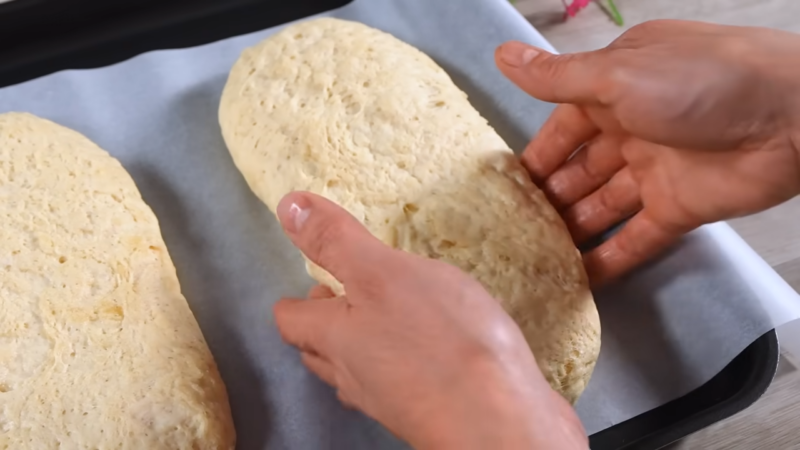
Making your own bread at home can be a rewarding experience. Here’s a straightforward recipe for a classic white loaf that will help you apply your newfound understanding of the five key ingredients.
Ingredients
500 grams (4 cups) of bread flour 325 grams (1 1/3 cups) warm water (temperature around 110°F/43°C) 2 teaspoons (10 grams) salt 2 teaspoons (10 grams) sugar 1 packet (7 grams, or 2 1/4 teaspoons) of instant yeast 1 tablespoon vegetable oil
Instructions
Step 1: Mix the dry ingredients
In a large bowl, combine the flour, salt, and sugar. Stir until well mixed.
Step 2: Activate the yeast
In a separate small bowl, dissolve the yeast in warm water. Make sure the water is not too hot, as it may kill the yeast. Wait for about 5-10 minutes, until the yeast becomes frothy.
Step 3: Combine the ingredients
Create a well in the center of the flour mixture, then pour the yeast mixture into the well. Add the vegetable oil. Using a wooden spoon, mix until a shaggy dough forms.
Step 4: Knead the dough
Transfer the dough to a lightly floured surface. Knead it for about 10 minutes, until it becomes smooth and elastic. If the dough is too sticky, add a little more flour, but try to add as little as possible—the dough should be moist but not sticky.
Step 5: First rise (proofing)
Shape the dough into a ball and place it in a greased bowl. Cover with a clean kitchen towel and let it rise in a warm place for about 1 to 2 hours, or until it doubles in size.
Step 6: Shape the loaf
After the dough has risen, punch it down to release the gas. Shape it into a loaf by rolling it into a rectangle, then tightly roll it up, pinching the seam to seal.
Step 7: Second rise
Place the dough seam-side down in a greased loaf pan. Cover with the kitchen towel and let it rise for about 1 hour until it doubles in size again.
Step 8: Preheat your oven
While your dough is on its second rise, preheat your oven to 375°F (190°C).
Step 9: Bake the bread
Once the dough has risen, uncover it and place it in the preheated oven. Bake for about 30-35 minutes, or until the top is golden brown and the loaf sounds hollow when tapped on the bottom.
Step 10: Cool the bread
Remove the bread from the oven, and then carefully remove it from the pan. Let it cool on a wire rack before slicing.
FAQs:
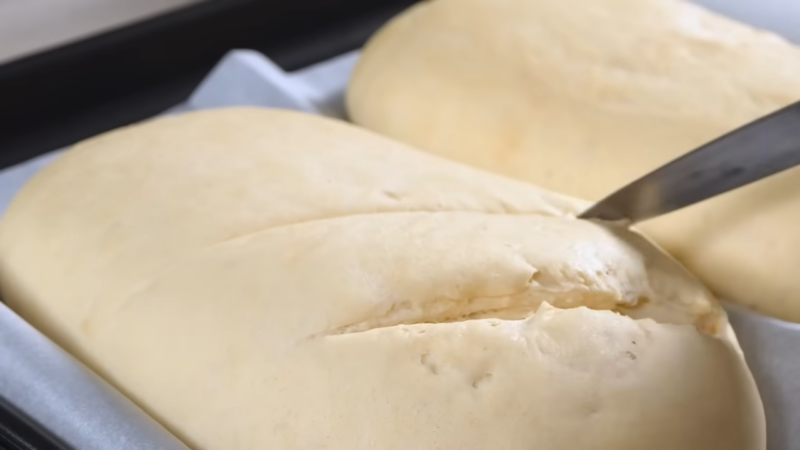
Can I freeze dough made with these ingredients?
Yes, you can freeze the dough after the first rise, but it may require longer thawing and rising times before baking.
Is it possible to make bread without using any leavening agent?
Without a leavening agent, the bread won’t rise and will be dense. It’s best to use yeast or other leavening agents for traditional baking.
Can I add other ingredients like nuts or seeds to my recipe?
Absolutely! Nuts, seeds, dried fruits, and other flavorings can enhance the taste and texture.
What can I do if my bread doesn’t rise properly?
Check the yeast’s expiration date, ensure the dough has sufficient warmth for rising, and consider using fresh yeast.
Can I use other liquids like milk or buttermilk instead of water?
Yes, milk or buttermilk can add richness and flavor to bread. However, be mindful of adjusting the recipe since milk has different hydration levels than water.
To sum up
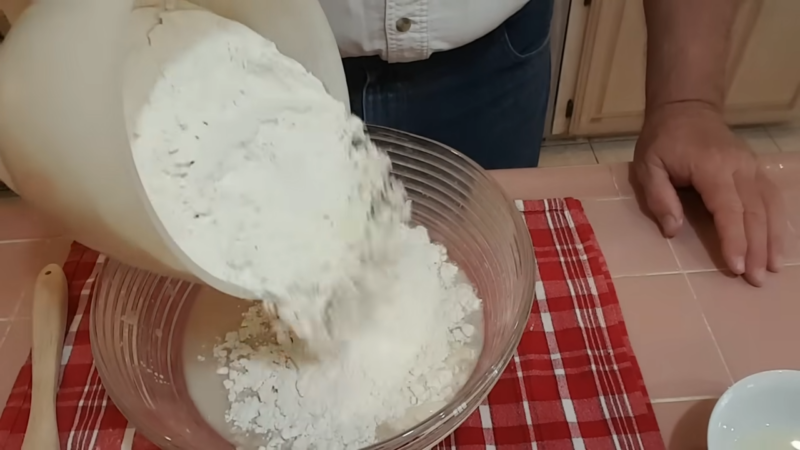
Understanding the five essential ingredients in baking bread is fundamental to creating delicious, homemade loaves with perfect texture and flavor. Remember, bread-making is an art.
Don’t be discouraged if your first few loaves aren’t perfect. With practice, you’ll get the hang of it and be able to bake bread that not only tastes great but is also perfectly tailored to your preferences.
If you want to watch more interesting videos about bread making, visit: https://www.ritasbakery.net/making-bread-using-a-dough-hook/
